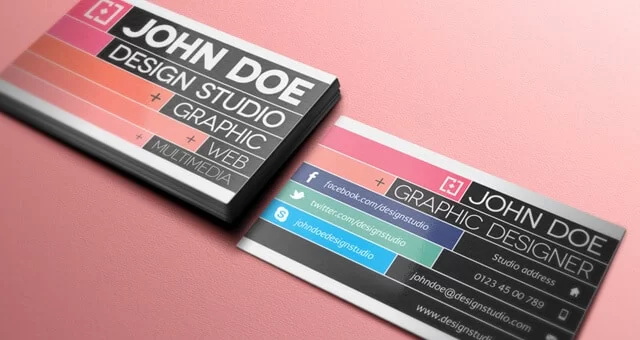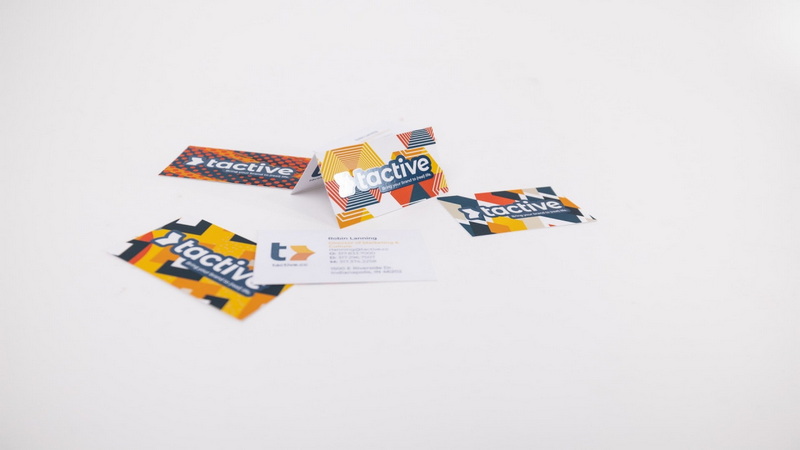Content Menu
● Name of the Individual
● Name of Business or Organization
● Job Title
● Contact Information
● Physical Address
● Tagline or Description
● Logo
● Social Media Links
● QR Code
● Design Elements
● Additional Features
● Digital Business Cards
● Best Practices for Distribution
● Cultural Considerations
● Maintenance and Updates
● Conclusion
● Frequently Asked Questions
>> 1. What is the most important element of a business card?
>> 2. Should I include my job title on my business card?
>> 3. Is it necessary to have a physical address on my business card?
>> 4. How can I make my business card stand out?
>> 5. What contact information should I include?
● Citations:
Creating an effective business card is essential for networking and leaving a lasting impression on potential clients and partners. A well-designed business card serves as a tangible representation of your brand and provides crucial contact information. This article will explore the key elements that should be included on a business card, along with best practices for design and presentation.

Name of the Individual
The most critical piece of information on any business card is the name of the individual. This should be prominently displayed, as it is the first thing people will look for when they receive your card. The font size should be larger than other text on the card to ensure visibility and memorability. It's also important to consider the spelling and formatting of your name. Ensure that it is consistent across all your professional materials to maintain a cohesive brand image.
Name of Business or Organization
Alongside your name, the name of your business or organization should also be clearly stated. This helps to establish your professional identity and brand recognition. Depending on your industry, you may choose to emphasize either your name or your business name more prominently. For instance, in creative fields like art or design, the individual's name might be more prominent, while in corporate settings, the company name may take precedence.
Job Title
Including your job title can provide context about your role within the organization. This is especially important in larger companies where multiple individuals may have similar names. Your title can help recipients understand your position and expertise at a glance. For example, a title like "Marketing Manager" immediately conveys your area of specialization.
Contact Information
Your business card should include essential contact details to facilitate communication:
- Phone Number: Include at least one phone number where you can be reached, such as a mobile or office number. Consider adding a direct line if available to streamline communication.
- Email Address: An email address is crucial for digital communication. Consider creating a professional email address specifically for business purposes to enhance credibility. Avoid using generic or personal email addresses that may undermine your professional image.
- Website Address: If applicable, include your company's website URL. This allows recipients to learn more about your services or products online. Ensure that your website is updated and reflects your current offerings.

Physical Address
If you operate from a physical location, including your address can help clients find you easily. For businesses that are entirely online, this information may not be necessary and can be omitted to save space. However, if you have a virtual office or a meeting space, including this address can provide a professional touch.
Tagline or Description
A brief tagline or description of your services can provide insight into what you do and help differentiate you from competitors. This could be a catchy phrase that encapsulates your brand's mission or a concise summary of the services you offer. For example, "Transforming Spaces with Innovative Design" gives a clear idea of your focus.
Logo
Incorporating your company logo is vital for brand recognition. A well-designed logo can make your card visually appealing and memorable. Ensure that it is of high quality and appropriately sized so that it does not overwhelm other information on the card. The logo should be consistent with your other marketing materials to reinforce your brand identity.
Social Media Links
In today's digital age, adding social media handles can enhance connectivity with potential clients. Include links to relevant platforms where you actively engage with customers, such as LinkedIn, Twitter, or Instagram. This allows recipients to connect with you beyond the physical card and stay updated on your latest activities.
QR Code
Including a QR code can provide quick access to your website or portfolio when scanned by a smartphone. This modern touch can make it easier for recipients to connect with you digitally and learn more about your offerings. QR codes can also be used to link to specific landing pages or promotions, making them a versatile tool for marketing.
Design Elements
The design of your business card plays a crucial role in its effectiveness:
- Color Scheme: Use colors that reflect your brand identity while ensuring readability. Avoid overly bright or clashing colors that might distract from the information.
- Font Choices: Select fonts that are easy to read and appropriate for your industry. For example, serif fonts are often used in traditional industries, while sans-serif fonts are more common in tech and modern sectors.
- Card Stock: Choose high-quality card stock to convey professionalism; this affects how recipients perceive the value of your brand. Thicker cards with a smooth finish can leave a positive impression.
- Layout: Organize information in a clear hierarchy, prioritizing essential details while avoiding clutter. Use white space effectively to ensure that the card does not look crowded.
Additional Features
Consider adding unique features that make your card stand out, such as:
- A photo (if relevant to your profession)
- Special finishes (like embossing or foil stamping) that enhance tactile appeal
- Functional elements (like calendars or notepads) that increase utility for recipients.
Digital Business Cards
In recent years, digital business cards have gained popularity, especially among professionals who prefer a more sustainable and easily updatable option. Digital cards can be shared via email or messaging apps and often include interactive elements like clickable links and QR codes. They offer the advantage of being easily editable and can be accessed from anywhere, making them a convenient alternative to traditional cards.
Best Practices for Distribution
When distributing your business cards, consider the context and audience:
- Networking Events: These are ideal places to exchange cards, as they provide opportunities to connect with potential clients and partners.
- Meetings: Always have cards ready during meetings, as they can be a professional way to leave a lasting impression.
- Conferences: Conferences and seminars are excellent venues for networking and exchanging cards.
Cultural Considerations
When doing business internationally, it's important to consider cultural norms regarding business cards:
- Respect for Tradition: In some cultures, such as Japan, the exchange of business cards is a formal ritual that requires respect and attention to detail.
- Language: Ensure that your card includes translations if you operate in a multilingual environment.
Maintenance and Updates
Regularly review and update your business cards to reflect any changes in your contact information or professional role. This ensures that your cards remain relevant and effective over time.
Conclusion
A well-crafted business card is an indispensable tool for networking and establishing professional relationships. By including essential information such as your name, contact details, job title, and branding elements like logos and taglines, you create a lasting impression that encourages further engagement.
When designing your business card, prioritize clarity and readability while maintaining an appealing aesthetic that reflects your professional identity. Remember, less is often more; focus on the most important information to avoid overwhelming the recipient.

Frequently Asked Questions
1. What is the most important element of a business card?
The most important element of a business card is the individual's name, which should be prominently displayed for easy recognition.
2. Should I include my job title on my business card?
Yes, including your job title helps clarify your role within the organization and adds context to your professional identity.
3. Is it necessary to have a physical address on my business card?
If you have a physical location where clients can visit, including an address is beneficial; otherwise, it may not be necessary for online businesses.
4. How can I make my business card stand out?
You can make your business card stand out by using unique design elements such as color schemes, fonts, high-quality materials, and possibly adding features like QR codes.
5. What contact information should I include?
At minimum, include one phone number and an email address; adding a website URL and social media links can also enhance connectivity.
Citations:
1. https://www.colorfxweb.com/blog/the-11-parts-of-a-business-card/
2. https://creativemarket.com/blog/10-commandments-of-business-card-design
3. https://bbs.gter.net/forum.php?mod=viewthread&action=printable&tid=402330
4. https://www.vistaprint.com/hub/business-card-information-essentials
5. https://www.indeed.com/career-advice/career-development/business-card-tips
6. https://github.com/jueqingsizhe66/XEmacs.d/blob/develop/README.md
7. https://www.primoprint.com/blog/10-crucial-parts-to-a-business-card-design/
8. https://99designs.com/designer-resource-center/designing-business-cards
9. https://www.indeed.com/career-advice/career-development/what-to-put-on-a-business-card
































